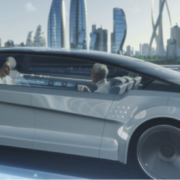Isn’t it interesting that self-driving cars and the software that launched this phenomenon are not required to pass a driving test, yet humans are?
I am here today to challenge the basic premise that software backed by artificial intelligence can drive a car better than a human.
Take left turns without a traffic light:
Artificial intelligence has consistently failed to successfully complete this standard objective.
This somewhat riskier driving maneuver must take into account drivers on the other side of the road, which humans can do, but the back-tested data in the self-driving software cannot predict external variables that could come into play.
This is why the software malfunctions on a left turn when a bird defecates on the windshield believing it’s an accident worthy of a full stop and yes a full stop right in the middle of oncoming traffic.
These types of poor decisions occur more often than you think with this “cutting-edge” technology.
The truth is that self-driving car technology has been very slow to develop.
Elon Musk has been talking about Tesla's Full Self-Driving technology for years. In 2016, the CEO said that Tesla's driver-assist feature Autopilot will be able to drive better than a human in two to three years.
He also said that by 2018, it would be possible to remotely summon a Tesla (TSLA) across the country.
In 2019, he said that Tesla could have a fleet of a million robotaxis by the end of 2020 if the company pumped out hundreds of thousands of FSD cars.
FSD is currently under investigation by the federal government in 2023.
Twenty years on from the start, no real product to show for except many unintended road deaths and rich Silicon Valley software engineers that peddle this false theory that software is better at driving than humans.
What’s the current situation today?
100% self-driving technology amounts to little more than a bunch of glorified tech demos. FSD isn’t the real deal.
In demos, you see what the creators want you to see, and they control for things that they'd rather you didn't.
To an AI, a slight change could be catastrophic. After all, how is it supposed to know what an appropriate response to a slight or sudden change is when it doesn’t understand everything it’s looking at?
How will it handle when the weather goes from sunny to hail, or when there’s deer in the headlights at the edge of the road?
It is unequivocally wrong to believe that software is better at real-time driving than a human, and therefore this industry will never mushroom into what investors think it might.
Self-driving cars are a 2-ton weapon ready to kill pedestrians, cyclists, and little kids.
The interesting thing to look for is whether these venture capitalists and investors double down on failed technology and pull strings to get this circus on public roads with the rest of us.
It’s entirely possible that this could happen in limited areas like the states of Arizona and California.
At the very minimum, if all 50 states do green-light such technology, we will need to wait another 15 or 20 years.
It’s not as imminent as Elon Musk tells us.
Don’t believe self-driving is the secret sauce that will be the next leg in revenue for Silicon Valley.
The benefits of this are not coming any time soon.
Outdoing the smartphone is proving to be almost impossible. Who would have known that the smartphone would have such staying power and longevity?
Tech is still utterly reliant on smartphone revenue until someone can supplant it and package it nicely in a consumer-friendly way. The road to that type of achievement is littered with good intentions.

ANOTHER LONG WHILE FOR SELF-DRIVING TO HIT THE MASSES



